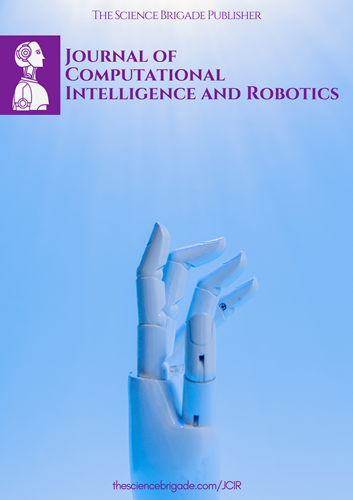Cybersecurity in Digital Transformation: Using AI to Automate Threat Detection and Response in Multi-Cloud Infrastructures
Keywords:
artificial intelligence, threat detection, incident response, multi-cloud infrastructureAbstract
The accelerating pace of digital transformation has led organizations to increasingly adopt multi-cloud infrastructures, which offer scalability, flexibility, and cost efficiency. However, these infrastructures also introduce significant security challenges, particularly in terms of managing and mitigating the expanding attack surface. The complexity of securing such environments, coupled with the volume and sophistication of cyber threats, has rendered traditional security mechanisms inadequate. In response, artificial intelligence (AI) has emerged as a transformative technology, capable of automating threat detection and response processes, thereby enhancing security postures and reducing incident response times in multi-cloud environments. This paper investigates the application of AI in automating cybersecurity within multi-cloud infrastructures during digital transformation, exploring its ability to detect, analyze, and respond to sophisticated threats in real-time.
The first part of the research focuses on the critical security challenges posed by multi-cloud infrastructures, particularly the heterogeneity of cloud platforms, disparate security controls, and the need for consistent visibility across environments. These challenges exacerbate the difficulty of threat detection and response, which is further compounded by the lack of centralized security governance and the increased vulnerability of cloud-native applications. The paper examines how the dynamic nature of cloud services, such as autoscaling and resource allocation, introduces security risks that traditional methods fail to adequately address.
AI-driven threat detection systems leverage advanced machine learning (ML) algorithms, neural networks, and deep learning models to identify anomalous behavior and detect potential threats across multi-cloud environments. The research delves into how AI models can be trained to analyze vast amounts of data generated from various cloud platforms, such as Amazon Web Services (AWS), Microsoft Azure, and Google Cloud Platform (GCP), to detect threats in real time. By integrating AI into security information and event management (SIEM) systems, organizations can automate the process of correlating logs, identifying patterns indicative of malicious activity, and reducing false positives. Furthermore, the paper discusses how AI can enhance the accuracy and speed of intrusion detection systems (IDS) and intrusion prevention systems (IPS) in multi-cloud environments, allowing for proactive defense mechanisms.
References
S. R. Ghimire, R. B. Ranjan, and M. Gupta, "Cybersecurity challenges in multi-cloud environments: A review," IEEE Access, vol. 10, pp. 999-1012, 2022.
M. G. Karpagavel, S. P. K. Shankar, and A. I. Ghosh, "AI-driven threat detection and response in multi-cloud infrastructures," IEEE Transactions on Cloud Computing, vol. 10, no. 4, pp. 1345-1358, 2022.
Machireddy, Jeshwanth Reddy. "Data-Driven Insights: Analyzing the Effects of Underutilized HRAs and HSAs on Healthcare Spending and Insurance Efficiency." Journal of Bioinformatics and Artificial Intelligence 1.1 (2021): 450-470.
Singh, Jaswinder. "The Rise of Synthetic Data: Enhancing AI and Machine Learning Model Training to Address Data Scarcity and Mitigate Privacy Risks." Journal of Artificial Intelligence Research and Applications 1.2 (2021): 292-332.
Tamanampudi, Venkata Mohit. "NLP-Powered ChatOps: Automating DevOps Collaboration Using Natural Language Processing for Real-Time Incident Resolution." Journal of Artificial Intelligence Research and Applications 1.1 (2021): 530-567.
Ahmad, Tanzeem, et al. "Sustainable Project Management: Integrating Environmental Considerations into IT Projects." Distributed Learning and Broad Applications in Scientific Research 5 (2019): 191-217.
Alluri, Venkat Rama Raju, et al. "Serverless Computing for DevOps: Practical Use Cases and Performance Analysis." Distributed Learning and Broad Applications in Scientific Research 4 (2018): 158-180.
J. Singh, “The Future of Autonomous Driving: Vision-Based Systems vs. LiDAR and the Benefits of Combining Both for Fully Autonomous Vehicles ”, J. of Artificial Int. Research and App., vol. 1, no. 2, pp. 333–376, Jul. 2021
Tamanampudi, Venkata Mohit. "Leveraging Machine Learning for Dynamic Resource Allocation in DevOps: A Scalable Approach to Managing Microservices Architectures." Journal of Science & Technology 1.1 (2020): 709-748.
Bonam, Venkata Sri Manoj, et al. "Secure Multi-Party Computation for Privacy-Preserving Data Analytics in Cybersecurity." Cybersecurity and Network Defense Research 1.1 (2021): 20-38.
A. E. Khedher, L. Bouguila, and M. M. Ouerfelli, "Enhancing cybersecurity in multi-cloud environments using AI techniques," IEEE Transactions on Information Forensics and Security, vol. 17, pp. 112-126, 2022.
Downloads
Published
How to Cite
Issue
Section
License

This work is licensed under a Creative Commons Attribution-NonCommercial-ShareAlike 4.0 International License.
License Terms
Ownership and Licensing:
Authors of this research paper submitted to the journal owned and operated by The Science Brigade Group retain the copyright of their work while granting the journal certain rights. Authors maintain ownership of the copyright and have granted the journal a right of first publication. Simultaneously, authors agreed to license their research papers under the Creative Commons Attribution-NonCommercial-ShareAlike 4.0 International (CC BY-NC-SA 4.0) License.
License Permissions:
Under the CC BY-NC-SA 4.0 License, others are permitted to share and adapt the work, as long as proper attribution is given to the authors and acknowledgement is made of the initial publication in the Journal. This license allows for the broad dissemination and utilization of research papers.
Additional Distribution Arrangements:
Authors are free to enter into separate contractual arrangements for the non-exclusive distribution of the journal's published version of the work. This may include posting the work to institutional repositories, publishing it in journals or books, or other forms of dissemination. In such cases, authors are requested to acknowledge the initial publication of the work in this Journal.
Online Posting:
Authors are encouraged to share their work online, including in institutional repositories, disciplinary repositories, or on their personal websites. This permission applies both prior to and during the submission process to the Journal. Online sharing enhances the visibility and accessibility of the research papers.
Responsibility and Liability:
Authors are responsible for ensuring that their research papers do not infringe upon the copyright, privacy, or other rights of any third party. The Science Brigade Publishers disclaim any liability or responsibility for any copyright infringement or violation of third-party rights in the research papers.




